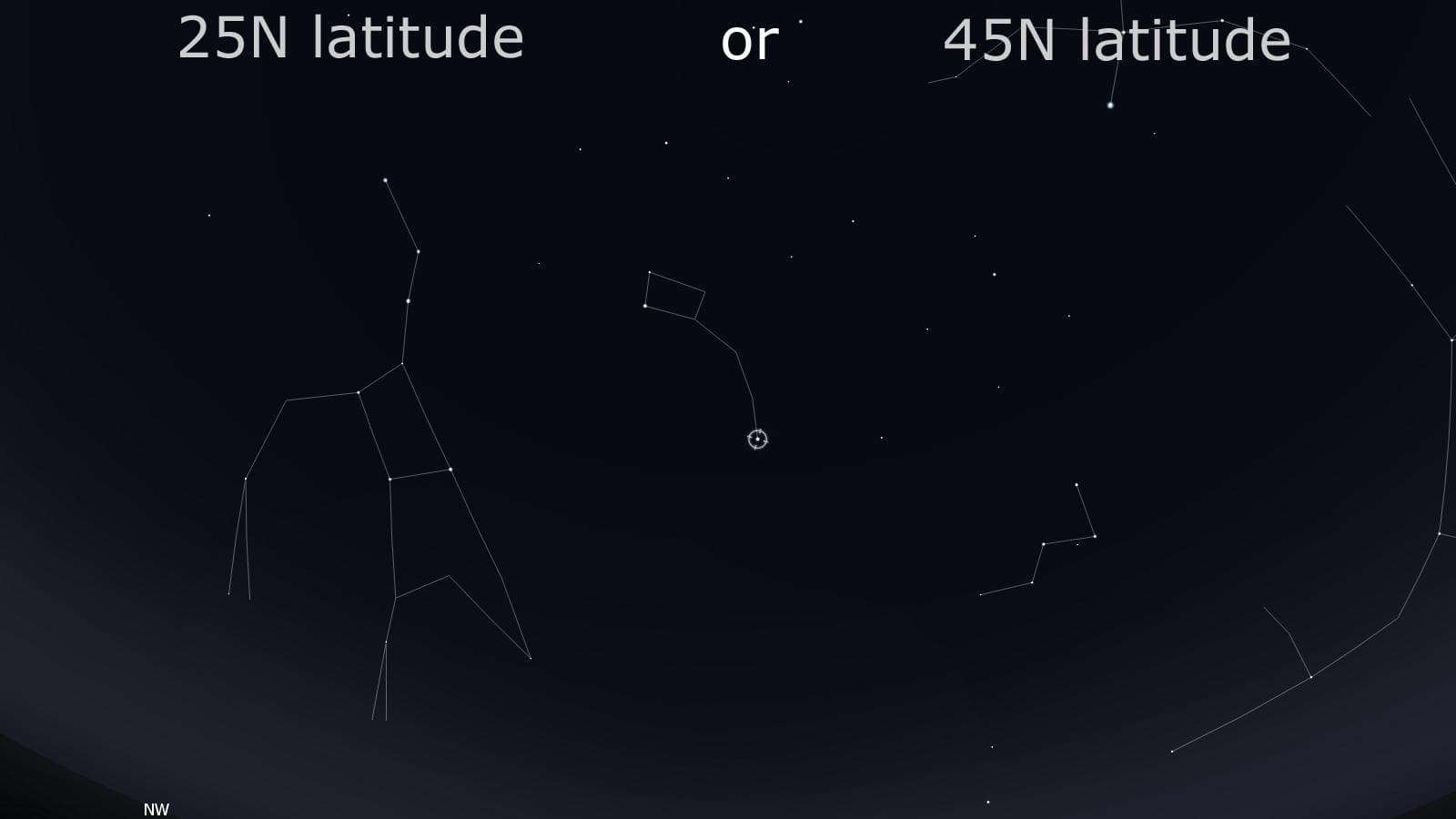Shapes in the Sky
Learn these six shapes, and you will be well on your way to knowing the night sky
If you want to start learning the night sky quickly and without the need of a smartphone, these are the basic shapes in the sky to know first. These are all bright and easy to spot. This page contains videos that detail exactly where and how to find them from both 25 or 45 degrees north latitude. And by watching these videos, you will be more confident in learning where these shapes in the sky are - all in under 30 minutes.
Big Dipper
The Big Dipper, or Plough as it is known in some parts of the world, is one of the more easily recognized asterisms in the night sky.
Cassiopeia
Cassiopeia the Queen may not be quite as well known or large, but where she is in the sky makes her shape quite important to find many other objects.
The Summer Triangle
The Summer Triangle is not a constellation, but three bright stars between the northern celestial pole and the center of our Milky Way. And this shape is useful to know not only because of the bright stars and well known constellations, but for locating other parts of the sky from it.
The Great Square of Pegasus
This nearly-perfect square shape in the sky isn't composed of the brightest stars like the Summer Triangle is, but the lines created by it point to several well-known constellations that will lead you to wonderful deep sky treasures.
The "Teapot"
While there are a great many objects that are constellations, this shape is a usefully recognizable one within the larger constellation of Sagittarius. Because of it's location near our galaxies core, clusters and nebulae abound near here. This is a good area to know!
Orion
Orion may be one of the most striking areas of the night sky: Bright stars and a configuration that is impossible to miss. And knowing a little bit about Orion can lead you to many more bright stars and constellations of winter.

